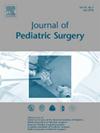Pediatric ECMO Outcomes in Children With Severe Infections: Does Infectious Source Matter?
IF 2.4
2区 医学
Q1 PEDIATRICS
引用次数: 0
Abstract
Background
Although Extracorporeal Membrane Oxygenation (ECMO) utilization in pediatric patients with cardiopulmonary failure due to infection improves mortality, it is unclear whether the infectious etiology impacts outcomes. The aim of this study is to compare ECMO outcomes in children with sepsis and severe acute lung injury secondary to infections based on culture data.
Methods
A retrospective review was done of patients aged <18 with severe infections whose management included ECMO from 2013 to 2022 at a quaternary children's hospital. Respiratory and blood cultures were reviewed. Mortality for all groups was compared using univariate and multivariate models.
Results
A total of 155 patients were included. Overall mortality on ECMO was 36 % and mortality at discharge was 51 %. Using a Cox proportional hazards regression, patients with both positive blood and respiratory cultures at time of cannulation had an adjusted HR (Hazard Ratio) for mortality on ECMO of 7.65 (95 % CI 1.92–30.44, p = 0.004) and adjusted HR for mortality at discharge of 4.48 (95 % CI 1.69–11.88, p = 0.003) compared to those with only positive bacterial respiratory cultures. There was increased mortality on ECMO for patients with more than one virus identified on viral respiratory panel [HR 6.1 (CI 1.1–32.9, p = 0.03)], but no difference in mortality of patients with polymicrobial bacterial pneumonias. There was no relationship between bacterial organism and mortality, but patients with RSV and COVID viral infections demonstrated higher mortality.
Conclusions
ECMO outcomes in pediatric patients with cardiopulmonary failure secondary to infection differ based on the infectious source. This information is important when discussing prognosis with families prior to cannulation.
Study Type/Level of Evidence
Retrospective Review, Cohort study.
求助全文
约1分钟内获得全文
求助全文
来源期刊
CiteScore
1.10
自引率
12.50%
发文量
569
审稿时长
38 days
期刊介绍:
The journal presents original contributions as well as a complete international abstracts section and other special departments to provide the most current source of information and references in pediatric surgery. The journal is based on the need to improve the surgical care of infants and children, not only through advances in physiology, pathology and surgical techniques, but also by attention to the unique emotional and physical needs of the young patient.

 求助内容:
求助内容: 应助结果提醒方式:
应助结果提醒方式:


